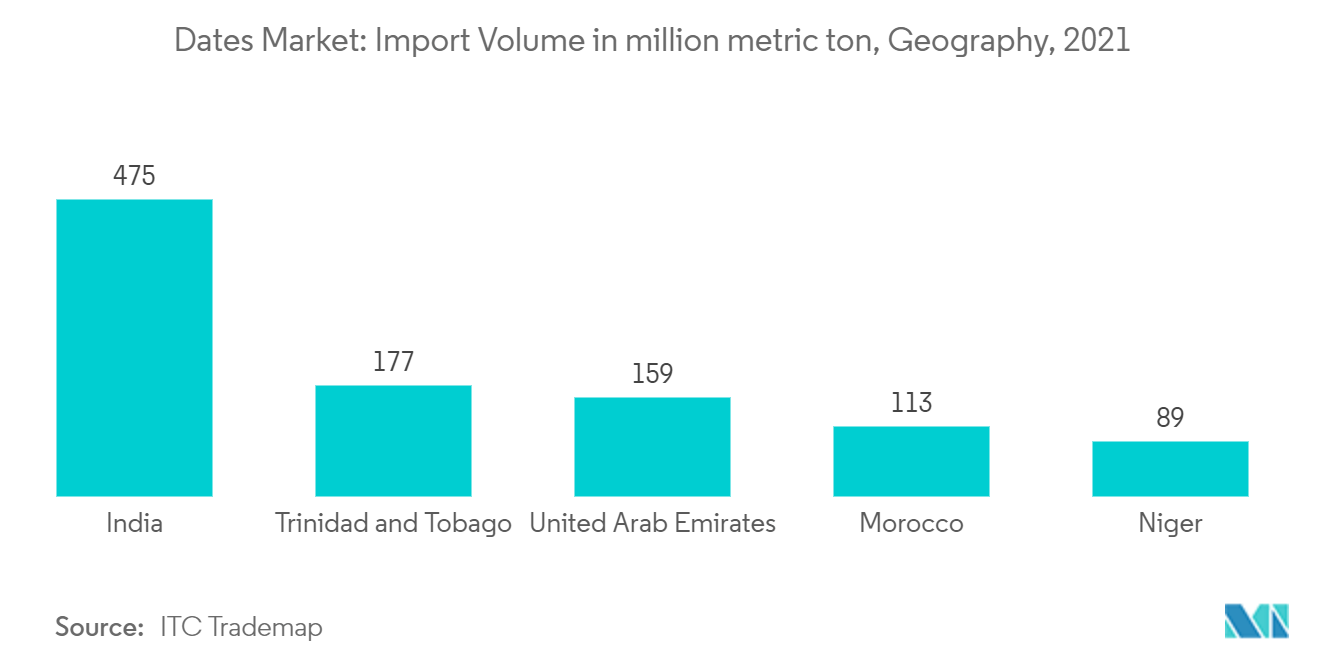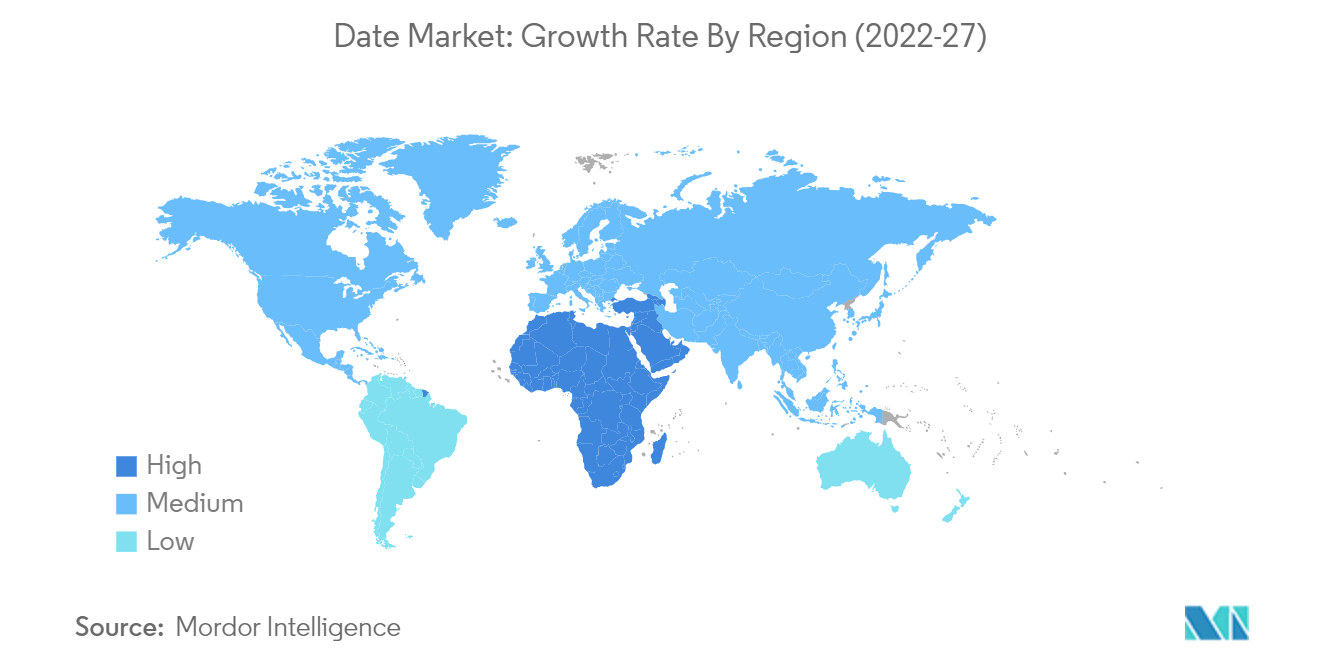Market Trends of Date Industry
This section covers the major market trends shaping the Date Market according to our research experts:
Rising Awareness of Health Benefits of Dates is Driving the Market
Dates have an excellent nutrition profile. They are a rich source of vitamins and minerals, including iron, potassium, vitamin B, copper, magnesium, and fiber. Dates are also a good source of antioxidants, mainly carotenoids and phenolics. Dates are a popular food across the Middle East. They are a sign of hospitability, served in greeting and post-meal.
Further, with the emerging trend of healthy snacking, consumption is rising in other parts of the world. According to a database published by the ITC Trade map, India was the most extensive dates importing country in the year 2021, with an import volume of 475 thousand metric ton and USD 240,350 thousand in terms of import value. Trinidad and Tobago ranked second in date imports with an import of about 177 thousand metric ton. Indonesia is another major importer of dates in the Asia-Pacific region.
Furthermore, consumption is rising in European countries, including France, Germany, the United Kingdom, and the Netherlands. European consumers are searching for healthier alternatives to snacks between meals or snacks that can replace meals. Younger consumers are switching from sweets such as candies and chocolate snacks to low-sugar options. Thus, considering these factors, the date market is expected to witness significant growth over the forecast period.

Middle East and Africa Dominate the Market
Middle East and Africa are the largest markets for dates globally. Tunisia, Iran, Israel, Saudi Arabia, the United Arab Emirates, Iraq, and Egypt dominate the Middle East and North African (MENA) region based on the volume of dates consumption and production. Saudi Arabia is the global leader in date production. There is great potential for increasing production area under date palms to fulfill local dates demand and produce date fruits for export. This will likely drive date market growth in the coming year.
Dates are collected for their sweetness and remain a staple food for thousands of years worldwide, particularly in the Middle East and African regions. Date fruit is unique in Islamic countries. Dates are traditionally served at iftar tables to break the fast during the holy month of Ramadan. They are also served at greetings, funerals, and post-meals. The demand for dates peaks during the holy season of Ramadan, resulting in high imports.
The popularity of festivals is boosting the intake of fruits even more. The Al Qassim date festival is celebrated annually in the Al Qassim region of Saudi Arabia, where approximately 300,000 metric ton of dates are sold. The growing popularity of this festival and heritage activities attracts tourists from neighboring countries, leading to increased date consumption. Factors that make date fruit so crucial in the desert environment are that they are easily digested, allowing the body to use its nutrients fully. Dates are known to be high in calcium, and a single serving can provide around 20% of the dietary fiber needs. These are available throughout the year in Saudi and are often used to make smoothies. Therefore, these factors fuel the market during the forecast period.


